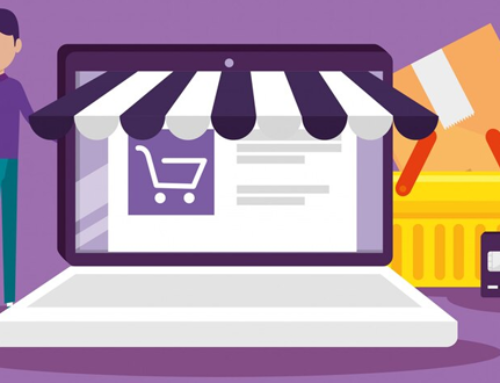Introduction to the Purchase Process: Understanding the Pivotal Point in the Customer Journey
The purchase process, also known as the transactional stage of the consumer buying journey, signifies a critical moment in building relationships with customers and ultimately driving business success. It’s where careful consideration, decision-making, and the final act of acquiring a product or service take place. Understanding the intricacies of this process, from psychological influences to the impact of technology, is crucial for businesses to effectively guide customers towards conversion.
Significance of the Purchase Phase:

The purchase phase holds immense significance for several reasons:
- Conversion Point: It marks the culmination of marketing efforts and the point where potential interest translates into actual revenue.
- Customer Satisfaction: A positive and efficient purchase experience fosters customer satisfaction and loyalty, encouraging repeat business and positive word-of-mouth marketing.
- Data Gathering: The purchase process provides valuable data and insights into customer behavior, preferences, and buying patterns, which can be used for targeted marketing strategies and product development.
Psychological Factors in Purchase Decisions:

Beyond rational considerations like price and product features, psychological factors play a significant role in influencing purchase decisions:
- Emotions: Consumers are often driven by emotions such as excitement, fear of missing out (FOMO), and the desire for social approval.
- Perception: Individual perceptions and brand image heavily influence purchase decisions. Consumers are drawn to brands they perceive as trustworthy, reliable, and aligned with their values.
- Cognitive Biases: Cognitive biases like the anchoring effect (relying heavily on the first presented price) and the sunk cost fallacy (investing further in a losing proposition) can influence purchasing behavior.
Understanding these psychological factors allows businesses to craft compelling marketing messages, personalize customer experiences, and build trust to influence purchase decisions positively.
Integration of Technology in Modern Purchasing:
Technology has significantly transformed the way consumers purchase goods and services:
- E-commerce: The rise of e-commerce platforms has made shopping convenient and accessible, allowing consumers to purchase from a wider selection of products anytime, anywhere.
- Online Shopping: Online platforms offer comparison tools, detailed product information, and user reviews, empowering consumers to make informed decisions.
- Mobile Transactions: The increasing popularity of mobile devices has led to the emergence of mobile wallets and one-click purchasing, making the buying process even more seamless and convenient.
However, the integration of technology also presents challenges:

- Information Overload: The sheer amount of information available online can overwhelm consumers and lead to decision fatigue.
- Security Concerns: Data breaches and online scams can make consumers hesitant to share personal information and complete online transactions.
Businesses must strategically leverage technology to enhance the purchasing experience while addressing security concerns and information overload to encourage confident and secure decision-making.
By understanding the significance, psychological factors, and technological landscape of the purchase process, businesses can create a frictionless and customer-centric purchasing experience, ultimately driving conversions, building loyalty, and achieving sustainable success.
Navigating the Pre-Purchase Stage: Empowering Customers for Informed Decisions
The pre-purchase stage is where consumers become aware of a need or desire, embark on research and information gathering, and ultimately form an initial opinion about potential solutions. This stage is crucial for businesses to establish themselves as credible sources and guide customers towards their products or services.
Research and Information Gathering:
In the initial stages, consumers actively seek information to understand their options and make informed decisions. Key aspects of this phase include:
- Product Research: Consumers research product features, specifications, and functionalities to understand how they meet their needs. They may utilize search engines, online reviews, and product comparison websites.
- Comparison Shopping: Consumers compare products from different brands and retailers based on factors like price, features, brand reputation, and customer reviews.
- Information Sources: Consumers gather information from various sources, including online reviews, social media, blogs, influencer recommendations, and brand websites.
Businesses can support the pre-purchase stage by:
- Providing detailed and informative product descriptions on their websites.
- Utilizing high-quality images and videos showcasing products from various angles.
- Developing a strong online presence with informative content addressing customer questions and concerns.
Importance of Reviews and Testimonials:
Customer reviews and testimonials play a critical role in influencing purchase decisions during the pre-purchase stage. Here’s why:
- Credibility and Trust: Reviews offer unfiltered feedback from previous customers, building credibility and trust for potential buyers.
- Social Proof: Positive reviews create a sense of social proof, indicating that others have used and enjoyed the product, encouraging new customers to make the same choice.
- Valuable Insights: Reviews can provide valuable insights into product strengths, weaknesses, and real-world user experiences.
Businesses can leverage the power of reviews by:
- Encouraging customers to leave reviews on their website and other platforms.
- Responding to reviews in a professional and timely manner, addressing both positive and negative feedback.
- Showcasing positive reviews and testimonials prominently on their website and marketing materials.
Personalization in Pre-Purchase Interactions:
Personalization in the pre-purchase stage can significantly enhance the customer experience and guide them towards conversion. Here are some ways to achieve this:
- Targeted Marketing: Utilize customer data and browsing history to deliver targeted marketing messages and product recommendations that resonate with individual needs and interests.
- Personalized Recommendations: Recommend products based on past purchases and browsing behavior, offering a more relevant and engaging experience.
- Customization Options: Offer customization options whenever possible to allow customers to tailor products or services to their specific needs.
By implementing personalization strategies, businesses can demonstrate a genuine understanding of customer needs, build stronger relationships, and ultimately increase their chances of conversion.
The pre-purchase stage is a crucial opportunity for businesses to engage with potential customers, address their concerns, and guide them towards informed decisions. By providing valuable information, leveraging the power of reviews, and implementing personalization strategies, businesses can empower consumers and create a positive and memorable pre-purchase experience that paves the way for successful conversions.
The Decision-Making Moment: Guiding Customers Towards Conversion
The decision-making moment marks the culmination of the pre-purchase journey where consumers weigh the options and choose a product or service. Understanding the factors influencing their decision, and employing the right strategies, is crucial for businesses to secure conversions and drive sales.
Factors Influencing Purchase Decisions:
Several factors come into play during the critical decision-making moment:
- Pricing: Price remains a significant factor, however, consumers often consider value for money rather than just the lowest price.
- Brand Reputation: A strong brand reputation built on trust, reliability, and positive customer experiences significantly influences purchase decisions.
- Product Features: Consumers prioritize products that offer the features and functionalities that best address their specific needs and preferences.
- Reviews and Testimonials: As discussed previously, positive reviews and testimonials from other customers can act as powerful social proof, influencing purchase decisions.
- Emotional Connection: Consumers are often drawn to products that evoke positive emotions and align with their values and aspirations.
- Convenience and Accessibility: Easy purchasing options, clear product information, and seamless checkout processes significantly influence the decision-making moment, especially in the fast-paced online world.
Businesses can influence the decision-making moment by:
- Highlighting the unique value proposition of their products or services, focusing on how they solve customer problems and offer superior benefits.
- Crafting compelling marketing messages that resonate with target audiences and address their specific needs and desires.
- Optimizing their websites and checkout processes for ease of use and a seamless user experience.
The Role of Discounts and Promotions:
Discounts and promotions can be powerful tools to influence purchase decisions, however, they should be used strategically:
- Targeted Offers: Utilize targeted promotions and discounts based on customer data and purchasing habits to ensure relevance and effectiveness.
- Limited-Time Offers: Limited-time offers can create a sense of urgency and encourage immediate purchase decisions.
- Value-Added Promotions: Offer value-added promotions such as free shipping, bundled products, or loyalty programs to enhance the overall value proposition.
- It’s important to avoid relying solely on discounts to drive sales, as this can lead to price wars and erode brand value in the long run.
Overcoming Decision-Making Hurdles:
Consumers can experience various challenges during the decision-making phase:
- Indecision: An overwhelming amount of choice can lead to indecision and analysis paralysis.
- Cognitive Dissonance: The mental discomfort of making a choice, especially when faced with trade-offs, can cause cognitive dissonance.
- Decision Fatigue: Repeatedly making decisions throughout the day can lead to decision fatigue, making it harder to choose effectively.
Businesses can address these challenges by:
- Providing clear and concise product information to help customers make informed decisions.
- Offering comparison tools and product recommendations to simplify the decision-making process.
- Implementing clear and transparent pricing structures to avoid confusion and build trust.
By understanding the factors influencing purchase decisions, utilizing strategic discounting and promotions, and addressing common decision-making hurdles, businesses can effectively guide customers towards conversion and achieve sustainable success in the competitive marketplace.
The decision-making moment is a crucial juncture in the customer journey. By employing the right strategies, businesses can transform indecision into conversion, build lasting customer relationships, and achieve their sales goals.
Facilitating the Purchase Transaction: Removing Friction from the Buying Journey
The purchase transaction marks the final step in the customer journey, and its smoothness significantly impacts customer satisfaction and future buying behavior. Businesses need to streamline the checkout process, prioritize security measures, and cater to both online and in-store purchase experiences to ensure a positive conclusion to this crucial stage.
Streamlining the Checkout Process:
A seamless and user-friendly checkout process is essential for minimizing cart abandonment and maximizing conversion rates:
- Guest Checkout: Offer guest checkout options to avoid lengthy registration processes, especially for first-time customers.
- Multiple Payment Options: Provide a wide range of secure payment options such as credit cards, debit cards, digital wallets, and buy-now-pay-later options to cater to diverse customer preferences.
- Clear Order Summary: Display a clear and concise order summary during checkout, including product details, pricing, taxes, and shipping costs, to avoid confusion and ensure transparency.
- Mobile-Friendly Checkout: Optimize the checkout process for mobile devices, ensuring a smooth and convenient experience for on-the-go shoppers.
Security Measures in Online Purchases:
In the digital age, prioritizing security is paramount to building trust and encouraging online transactions:
- SSL Encryption: Implement Secure Sockets Layer (SSL) encryption to protect sensitive customer data, such as payment information, during transmission.
- Fraud Prevention: Utilize fraud prevention measures such as address verification, CVV code verification, and fraud scoring models to minimize the risk of fraudulent transactions.
- Secure Payment Gateways: Partner with reputable payment gateways that adhere to industry security standards and offer robust data protection protocols.
- Transparency and Communication: Clearly communicate your security measures to customers and promptly address any security concerns they may have.
In-Store Purchase Experience:
While e-commerce continues to grow, brick-and-mortar stores remain a crucial aspect of the retail landscape. Here’s how to enhance the in-store purchase experience:
- In-Store Technology: Utilize in-store technology such as self-checkout kiosks, mobile point-of-sale (mPOS) systems, and interactive product displays to enhance convenience and efficiency.
- Customer Service: Provide excellent customer service through knowledgeable and helpful staff who can answer questions, offer personalized recommendations, and ensure a positive overall experience.
- Omnichannel Integration: Integrate your online and offline channels to allow for seamless experiences. This could include click-and-collect options, in-store returns of online purchases, and consistent product information across both platforms.
By prioritizing a streamlined checkout process, implementing robust security measures, and tailoring strategies for both online and in-store purchases, businesses can ensure a smooth and positive purchase transaction, ultimately fostering customer satisfaction, loyalty, and repeat business.
In conclusion, the purchase transaction signifies the culmination of the customer journey. By removing friction from this stage through strategic implementation, businesses can convert interest into sales, build lasting customer relationships, and achieve sustainable success in the ever-evolving world of commerce.
Post-Purchase Engagement and Satisfaction: Nurturing Relationships Beyond the Sale
The customer journey doesn’t end with the purchase transaction. Building lasting relationships and fostering customer satisfaction requires continuous post-purchase engagement, fostering loyalty, and effectively managing any concerns.
Importance of Postpurchase Communication:
Proactive post-purchase communication demonstrates care and appreciation for customers, and opens doors for further engagement:
- Thank You Emails: Send personalized thank you emails expressing gratitude for the purchase and highlighting additional information such as product care instructions or warranty details.
- Feedback Requests: Encourage customers to leave feedback on their purchase experience through surveys or reviews. This valuable feedback can be used to identify areas for improvement and enhance future customer interactions.
- Post-Purchase Support: Offer readily available post-purchase support through various channels, such as email, phone, or live chat, to address any questions or concerns promptly and efficiently.
Customer Loyalty Programs and Retention:
Loyalty programs reward repeat customers and incentivize them to continue doing business with you:
- Loyalty Rewards: Offer points, discounts, or exclusive promotions to loyal customers based on their purchase history or engagement level.
- Retention Strategies: Implement retention strategies like personalized recommendations, early access to new products, or special birthday offers to keep customers engaged and coming back for more.
- Building Emotional Connection: Go beyond transactions by building an emotional connection with customers. Share your brand story, highlight your values, and engage with them on social media to create a sense of community and belonging.
Handling Customer Complaints and Returns:
Even with the best efforts, customer complaints and returns are inevitable. Effective handling of these situations is crucial for maintaining positive relationships:
- Customer Service: Ensure a positive customer service experience by addressing complaints promptly, professionally, and offering solutions that are fair and satisfactory.
- Return Policies: Implement clear and transparent return policies that outline the timeframe, conditions, and process for returning products.
- Resolution Processes: Establish efficient resolution processes to address customer concerns and returns quickly and effectively. This minimizes frustration and demonstrates your commitment to customer satisfaction.
By prioritizing post-purchase communication, implementing effective loyalty programs, and handling customer concerns with care and efficiency, businesses can nurture long-term customer relationships and ensure a positive and sustainable journey beyond the initial purchase. Remember, satisfied customers become loyal advocates, contributing significantly to your business’s success in the long run.
Harnessing Data for Purchase Insights
In the dynamic landscape of modern commerce, the effective use of data has become a cornerstone for businesses looking to enhance their understanding of consumer behavior and preferences. The utilization of purchase analytics is a powerful tool in this regard, allowing organizations to extract valuable insights that can shape their strategies and offerings.
Utilizing Purchase Analytics
Purchase analytics involves the systematic analysis of data related to consumer transactions. By dissecting this data, businesses can gain deep insights into various aspects of the purchasing process. Key metrics such as purchase frequency, average order value, and popular product categories can be assessed. This information provides a comprehensive overview of consumer preferences and trends, enabling businesses to make informed decisions.
From identifying top-performing products to understanding seasonal buying patterns, purchase analytics empowers organizations to tailor their offerings to meet specific consumer demands. By discerning what drives purchasing decisions, businesses can optimize their product positioning, pricing strategies, and marketing campaigns.
Personalized Recommendations for Future Purchases
Building on the foundation of purchase analytics, businesses can implement personalized recommendation systems. These systems leverage data-driven insights to offer individualized product suggestions to consumers. By understanding past purchase behavior, preferences, and even browsing history, businesses can curate a personalized shopping experience for each customer.
Whether through the use of recommendation engines on e-commerce platforms or targeted email campaigns, personalized recommendations enhance customer engagement and satisfaction. This tailored approach not only increases the likelihood of repeat purchases but also fosters a sense of loyalty as customers feel understood and valued.
In essence, the combination of purchase analytics and personalized recommendations represents a symbiotic relationship between data and consumer experience. It not only provides businesses with a competitive edge but also ensures that consumers receive a more enjoyable and relevant shopping journey. As businesses continue to harness the power of data, the future of purchasing holds exciting possibilities for both sellers and buyers alike.
Ethical Considerations in Purchasing
Sustainable and Ethical Purchasing Practices
In today’s conscientious marketplace, consumers are increasingly prioritizing sustainable and ethical purchasing practices. This extends beyond merely acquiring a product to considering its entire lifecycle – from sourcing raw materials to production methods and disposal. Keywords such as ethical sourcing, eco-friendly products, and corporate responsibility underscore the importance of choices that align with environmental and social values. Companies embracing sustainable practices not only contribute to global well-being but also resonate with a growing segment of socially responsible consumers. Examining the role of ethics and sustainability in modern consumer choices reveals a dynamic landscape where conscious decisions shape the marketplace.
Legal and Regulatory Aspects of Purchasing
Compliance with Consumer Protection Laws
In the complex world of commerce, adherence to consumer protection laws is paramount for businesses seeking to build trust and maintain integrity. Keywords such as consumer rights, legal obligations, and regulatory compliance emphasize the need for businesses to safeguard consumers’ interests. This involves transparent transactions, clear communication, and fair treatment. Striving for compliance not only protects consumers but also shields businesses from legal repercussions. Understanding and adhering to these legal requirements form the foundation for ethical business practices, fostering a marketplace where both consumers and businesses can engage with confidence. Adhering to legal requirements ensures that consumer rights are respected, contributing to a fair and accountable purchasing environment.
Future Trends in Purchasing
Emerging Technologies in the Purchase Process
The future of purchasing is undergoing a transformative shift with the integration of cutting-edge technologies. Augmented Reality (AR), Virtual Reality (VR), and Blockchain are revolutionizing the way consumers engage with products and services. AR and VR provide immersive experiences, allowing customers to visualize products in real-world settings before making a purchase decision. Blockchain technology, on the other hand, ensures transparency, traceability, and security in transactions. As these technologies continue to mature, businesses must stay abreast of these advancements to leverage them effectively and enhance the overall purchase experience. The integration of innovative technologies is not just a trend; it’s a paradigm shift that reshapes the purchasing landscape.
E-commerce and the Evolution of Shopping Channels
The landscape of shopping channels is continuously evolving, driven by the rise of e-commerce and changing consumer behaviors. Multichannel shopping, Social Commerce, and Voice Commerce are at the forefront of this evolution. Multichannel shopping emphasizes the seamless integration of various platforms, allowing consumers to transition effortlessly between online and offline channels.
Social Commerce leverages social media platforms as shopping avenues, tapping into the influence of peer recommendations and social interactions. Voice Commerce, facilitated by virtual assistants and smart devices, enables consumers to make purchases using voice commands. As these channels continue to gain prominence, businesses need to adapt their strategies to meet consumers where they are. The evolution of shopping channels signifies a dynamic shift in how consumers discover, evaluate, and ultimately make purchasing decisions in the digital age.
Conclusion
In conclusion, mastering the art of purchase is an intricate dance between understanding consumer dynamics, harnessing data for insights, and embracing ethical and legal considerations. Businesses must navigate the ever-evolving landscape of purchasing trends, incorporating emerging technologies and adapting to new shopping channels.
Understanding consumer behavior is the cornerstone of successful purchasing strategies. By delving into the intricacies of consumer preferences and employing data analytics, businesses can tailor their offerings and enhance the overall shopping experience. The personalization of recommendations based on purchase analytics not only adds value to the customer but also establishes a deeper connection between the consumer and the brand.
Ethical considerations play a pivotal role in modern-day purchasing decisions. Consumers are increasingly conscious of sustainability, ethical sourcing, and corporate responsibility. Businesses that prioritize these values not only meet regulatory requirements but also build trust and loyalty among their customer base.
Navigating the legal landscape is essential to protect consumer rights and maintain regulatory compliance. Adherence to consumer protection laws ensures transparency and fairness in transactions, fostering a positive reputation for the business.
Looking forward, the future of purchasing is marked by the integration of emerging technologies like Augmented Reality, Virtual Reality, and Blockchain. These innovations redefine how consumers interact with products and services, providing immersive experiences and ensuring secure and transparent transactions.
As e-commerce continues to dominate, businesses need to embrace multichannel shopping, social commerce, and voice commerce. Adapting to these evolving shopping channels is imperative for staying competitive and meeting the diverse needs of consumers.
In essence, mastering the art of purchase requires a holistic approach that combines consumer understanding, ethical considerations, legal compliance, and a forward-thinking embrace of technology. Businesses that adeptly navigate these aspects are well-positioned to not only meet but exceed the expectations of the modern consumer.








